| Peyote Queen | |
|---|---|
 Still from Peyote Queen | |
| Directed by | Storm de Hirsch |
Release date | 1965 |
Running time | 9 minutes |
| Country | United States |
Peyote Queen is an experimental short film by Storm de Hirsch, produced in 1965.
| Peyote Queen | |
|---|---|
 Still from Peyote Queen | |
| Directed by | Storm de Hirsch |
Release date | 1965 |
Running time | 9 minutes |
| Country | United States |
Peyote Queen is an experimental short film by Storm de Hirsch, produced in 1965.
Peyote Queen is the second and best known part of de Hirsch's trilogy, The Color of Ritual, the Color of Thought. It is preceded by Divinations (1964) and Shaman (1966). The film's imagery is abstract, consisting of both live action footage and animated sequences which de Hirsch created by painting and etching directly on the 16mm film stock. Split screens, kaleidoscopic lenses, and abstract animations are used to create a psychedelic effect. De Hirsch had a background in painting (she published an interview of the abstract expressionist painter, Willem de Kooning, in 1955), and her films of this period have been described as "painterly." [1] [2] The soundtrack consists of African drumming and singing interspersed with American pop music.
As an independent film, Peyote Queen is not well known to the general public, but it has received some positive reviews. Jonas Mekas was enthusiastic, writing in the Village Voice , "Among my favorites ... beauty and excitement." [3] Dominique Noguez, writing in La Nouvelle Revue Française , called it "a very beautiful work! The abstractions drawn directly on film are like the paintings of Miró moving at full speed to the rhythm of an African beat." [3] Reviewers for DINCA and Dangerous Minds have called it "an avant-garde gem" [4] and "a psychedelic classic." [5]
The film is included on Treasures IV: American Avant-Garde Film, 1947-1986 , a DVD collection published by the National Film Preservation Foundation in 2008. The collection won the 2009 Film Heritage Award (National Society of Film Critics) and was named 2009 Best Avant-Garde Publication at Il Cinema Ritrovato Festival in Bologna. [6]
Parts of the film are said to be reminiscent of Len Lye's Free Radicals (1958), which also features a drum soundtrack and white-on-black animations created by scratching the film emulsion. [7]
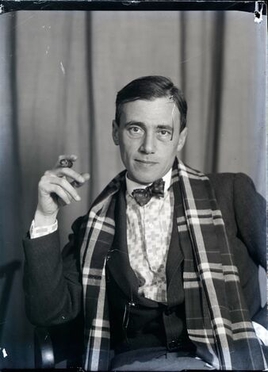
HansRichter was a German Dada painter, graphic artist, avant-garde film producer, and art historian. In 1965 he authored the book Dadaism about the history of the Dada movement. He was born in Berlin into a well-to-do family and died in Minusio, near Locarno, Switzerland.
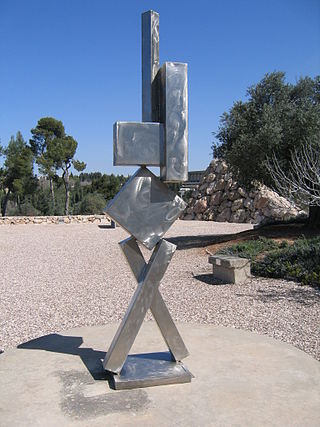
Abstract expressionism in the United States emerged as a distinct art movement in the immediate aftermath of World War II and gained mainstream acceptance in the 1950s, a shift from the American social realism of the 1930s influenced by the Great Depression and Mexican muralists. The term was first applied to American art in 1946 by the art critic Robert Coates. Key figures in the New York School, which was the epicenter of this movement, included such artists as Arshile Gorky, Jackson Pollock, Franz Kline, Mark Rothko, Norman Lewis, Willem de Kooning, Adolph Gottlieb, Clyfford Still, Robert Motherwell and Theodoros Stamos among others.

Clement Greenberg, occasionally writing under the pseudonym K. Hardesh, was an American essayist known mainly as an art critic closely associated with American modern art of the mid-20th century and a formalist aesthetician. He is best remembered for his association with the art movement abstract expressionism and the painter Jackson Pollock.

Franz Kline was an American painter. He is associated with the Abstract Expressionist movement of the 1940s and 1950s. Kline, along with other action painters like Jackson Pollock, Willem de Kooning, Robert Motherwell, John Ferren, and Lee Krasner, as well as local poets, dancers, and musicians came to be known as the informal group, the New York School. Although he explored the same innovations to painting as the other artists in this group, Kline's work is distinct in itself and has been revered since the 1950s.
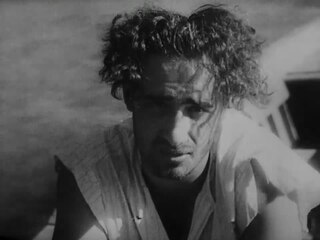
Experimental film or avant-garde cinema is a mode of filmmaking that rigorously re-evaluates cinematic conventions and explores non-narrative forms or alternatives to traditional narratives or methods of working. Many experimental films, particularly early ones, relate to arts in other disciplines: painting, dance, literature and poetry, or arise from research and development of new technical resources.

Italian futurist cinema was the oldest movement of European avant-garde cinema. Italian futurism, an artistic and social movement, impacted the Italian film industry from 1916 to 1919. It influenced Russian Futurist cinema and German Expressionist cinema. Its cultural importance was considerable and influenced all subsequent avant-gardes, as well as some authors of narrative cinema; its echo expands to the dreamlike visions of some films by Alfred Hitchcock.
Nostalgia, styled (nostalgia), is a 1971 American experimental film by artist Hollis Frampton. It is part of his Hapax Legomena series.
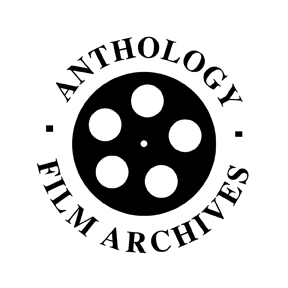
Anthology Film Archives is an international center for the preservation, study, and exhibition of film and video, with a particular focus on independent, experimental, and avant-garde cinema. The film archive and theater is located at 32 Second Avenue on the southeast corner of East 2nd Street, in a New York City historic district in the East Village neighborhood of Manhattan.

Walter Ruttmann was a German cinematographer and film director, an important German abstract experimental film maker, along with Hans Richter, Viking Eggeling and Oskar Fischinger. He is best known for directing the semi-documentary 'city symphony' silent film, with orchestral score by Edmund Meisel, in 1927, Berlin: Symphony of a Metropolis. His audio montage Wochenende (Weekend) (1930) is considered a major contribution in the development of audio plays.
William Moritz, film historian, specialized in visual music and experimental animation. His principal published works concerned abstract filmmaker and painter Oskar Fischinger. He also wrote extensively on other visual music artists who worked with motion pictures, including James and John Whitney and Jordan Belson; Moritz also published on German cinema, Visual Music, color organs, experimental animation, avant-garde film and the California School of Color Music.

The 9th Street Art Exhibition of Paintings and Sculpture is the official title artist Franz Kline hand-lettered onto the poster he designed for the Ninth Street Show. Now considered historic, the artist-led exhibition marked the formal debut of Abstract Expressionism, and the first American art movement with international influence. The School of Paris, long the headquarters of the global art market, typically launched new movements, so there was both financial and cultural fall-out when all the excitement was suddenly emanating from New York. The postwar New York avant-garde, artists like Willem de Kooning and Jackson Pollock, would soon become "art stars," commanding large sums and international attention. The Ninth Street Show marked their "stepping-out," and that of nearly 75 other artists, including Harry Jackson, Helen Frankenthaler, Michael Goldberg, Joan Mitchell, Grace Hartigan, Robert De Niro Sr., John Ferren, Philip Guston, Elaine de Kooning, Lee Krasner, Franz Kline, Ad Reinhardt, David Smith, Milton Resnick, Joop Sanders, Robert Motherwell, Barnett Newman, and many others who were then mostly unknown to an art establishment that ignored experimental art without a ready market.
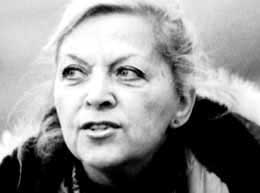
Storm de Hirsch (1912–2000) was an American poet and filmmaker. She was a key figure in the New York avant-garde film scene of the 1960s, and one of the founding members of the Film-Makers' Cooperative. Although often overlooked by historians, in recent years she has been recognized as a pioneer of underground cinema.
Scott Bartlett was one of the premiere abstract/experimental cinematic artists of the late 1960s and the 1970s. His acclaimed work, such as his intensely abstract 16mm movie Moon 1969, is greatly admired by many movie directors, including Francis Ford Coppola and George Lucas. His notable abstract movies and visual avant-garde motion pictures includes Serpent, Medina, Metanomen, Lovemaking, and the poignant interior documentary 1970. His 1967-1972 experiment OffOn, shot on 16mm, was groundbreaking for its use of new video imagery technologies.

Robert Carlton Breer was an American experimental filmmaker, painter, and sculptor.
The Treasures from American Film Archives series of DVDs is produced by the National Film Preservation Foundation (NFPF), a nonprofit organization created by the U.S. Congress in 1997. The NFPF publishes these DVD sets, with accompanying booklets and extensive commentary, to promote public access to the films preserved by the American archival community.
Non-narrative film is an aesthetic of cinematic film that does not narrate, or relate "an event, whether real or imaginary". It is usually a form of art film or experimental film, not made for mass entertainment.
Jane Conger Belson Shimané (1927–2002) was an American experimental filmmaker.

Woman VI is a 1953 abstract work of art painted by Willem de Kooning and first displayed at the Sidney Janis Gallery in Manhattan. Since the 1955 Carnegie International Exhibition, Woman VI has been on view at the Carnegie Museum of Art as part of the Postwar Abstraction collection. The Woman paintings of the early 1950s are widely considered to be de Kooning’s most important works for their significance to postwar American cultural history and social events, such as the mid-century Feminist Movements. Many of the paintings are speculated to be abstracted portraits of Marilyn Monroe. Woman VI is notable within the series for its brighter palette of green and red paint employed in larger fields of color.
Opus IV is a 1925 German absolute film directed by Walter Ruttmann. The film is approximately 3m 55s in length. It uses abstract animation.